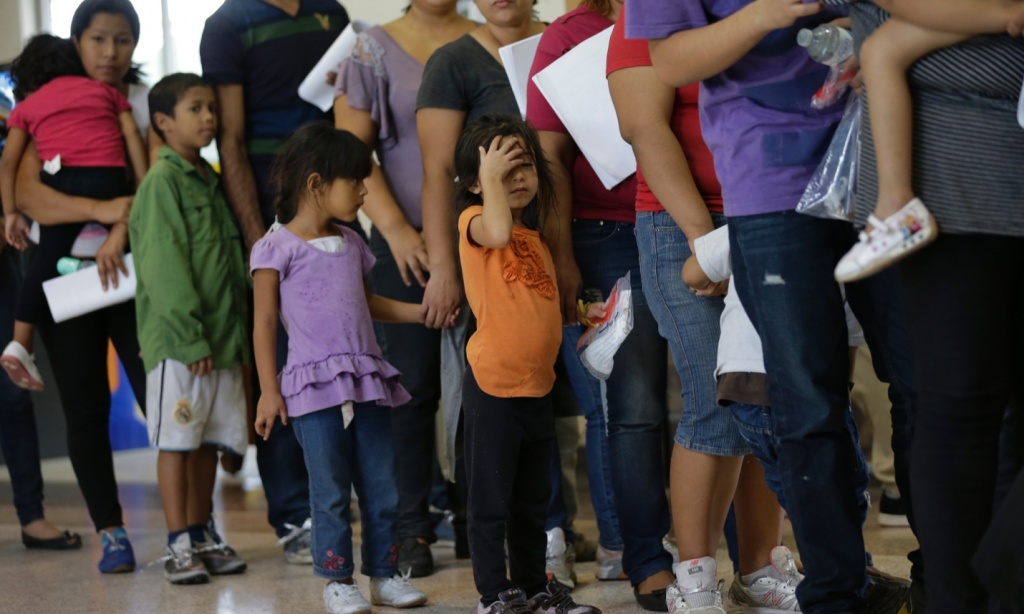
US green cards go to the few: one-third of Latin Americans rejected, 90% of Asians accepted
When it comes to green cards, some immigrants are more equal than others.
A research study conducted over 40 months shows that labor-certification applications for Asian and Canadian immigrants were approved 90.5% and 89.7% of the time, respectively. Yet those of Latin American immigrants were approved only 66.8% of the time.
Brown University and MIT researchers Benjamin Rissing and Emilio Castilla claim the green-card evaluation process shows gaping disparities in how foreign nationals are treated, depending on their country of origin.
Rissing and Castilla studied applications from 198,442 immigrants from 190 countries submitted for the US labor-certification process between June 2008 and September 2011. The applicants sought work authorization for 68,240 different firms. The application pool was taken from a single processing center in Atlanta, Georgia.
The researchers compared applicants from similar fields, with comparable salaries and educational qualifications.
The applications are only the first steps – but they are the hardest ones. Agents for the US Department of Labor examine them to determine whether the applicant has all the qualifications for the job he is seeking, as well as to see if a US worker would be disadvantaged if the immigrant were hired.
Theoretically, there should be no disparity in application approvals by country. As part of their training, Department of Labor agents are told to disregard potential immigrants’ nationality.
Yet this information is available right at the top of each application, explains Rissing, a professor of sociology at Brown.
The agents, who take 15-30 minutes to evaluate regular applications, have to spend about an hour before making a decision on those chosen for auditing. These applications, unlike the larger pool of applications, have detailed employment information.
A spokesperson for the Department of Labor confirmed that the decision is not made based on country of origin and so the department has not instituted any checks and balances to address disparities.
And yet application outcomes varied vastly, and in telling ways.
Immigrants who are not US citizens need green cards or permanent work permits to be employed in the US. If they don’t get meet Department of Labor standards, they tend not to advance.
“This US [Department of Labor] review is the first key step in the evaluation of the majority of employment-based green cards for ‘professionals with advanced degrees’ and ‘skilled workers, professionals, and unskilled workers,’” the researchers write in their cleverly titled paper: House of Green Cards: Statistical or Preference-Based Inequality in the Employment of Foreign Nationals, which was published in the American Sociological Review.

There’s a vast difference in the types of US jobs that immigrants from different parts of the world hope to land. For instance, Asians are predominantly employed in areas such as computer science and information technology. The paper indicates that Latin American immigrants are 25.4% less likely than Canadian or Asian immigrants to be approved for computer-science jobs.
Rissing explains the results: “We even looked at jobs in construction and restaurant cooks, jobs that might require less explicit human capital,” he says, but Asians were still more likely to be approved than applicants from Latin American countries.
What the researchers found interesting was that this differential treatment wasn’t constant. The Department of Labor assesses a subgroup of applications, chosen in a “quasi-random” fashion for audit. “If you’ve ever been unfortunate enough to have your taxes audited, its not dissimilar from that process,” jokes Rissing.
This special set made up 13% of all applications and had an approval rate of 57.1%. With its high rejection rate, the differences between any of the origin groups were statistically insignificant. A department spokesperson pointed at the audit process as a way to regulate the certification process, but admitted that these applications constitute only a fraction of the total pool. The spokesperson shared the department’s statement with the Guardian, reiterating that an immigrant’s country of origin is disregarded. The statement adds: “we are currently conducting an analysis of our data to compare it to the findings in the study.”
So what explains the gap in applications?
Rissing says that when they are reaching judgements, agents “might key on stereotypes or certain information on an aggregate population of worker based on their demographic characteristics.”
In interviewing these agents, he found that they might be influenced by the general perception and media coverage, as well as the treatment of specific immigrant groups by Homeland Security.
Rissing points out that 93% of US immigrant deportations target immigrants from just eight Latin American countries.
“32% of all immigrants that are regarded inadmissable at the country’s borders are from Mexico. It’s these sorts of things that could cause these government agents to regard applications from particular countries of origin such as Latin America with greater scepticism.”
This was particularly evident when his team interviewed the agents, who were equally male and female; according to Rissing, around half could be described as Caucasian. When the agents came across applications of immigrants from countries “which they viewed as friendly countries to the US, they might not see them with the same scrutiny and they let them go by.”

What the researchers want to highlight is that this bias depends on how much information agents have to work with. “When they lack that information, conscious or unconscious bias might creep in.”
Michael Wildes, of the law firm Wildes and Weinberg, however, thinks that the immigration process on the whole is unfairly tilted and somewhat politically charged, and that the labor certification process is only one part of it. Employment-based green card-applications take anywhere from one year (fast track) to 10 years, while most take four to six years, he explains.
He disagrees with the suggestion that the labor-certification process is based on nationality.
“The labor department has blinders. To their credit there’s nothing I can palpably see from one country to the other.”
But immigration, he says, itself is based on country-of-origin-based quotas that are inherently unfair. “Immigration has a sliding scale based on nationality which to me is not appropriate and was developed in a different age and different economy of our nation,” he says.
As a result, he sees clients rushing into marriages so as to accelerate the green-card process. “It’s inappropriate in the richest country in the world,” he says.
(From the: The Guardian)


